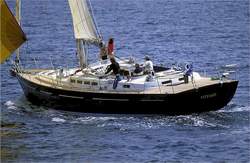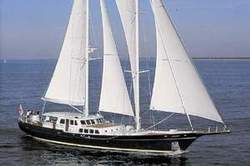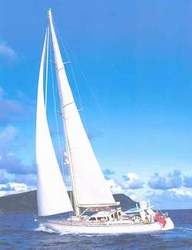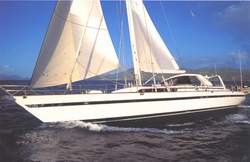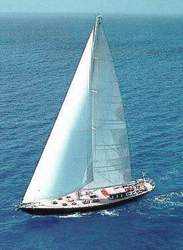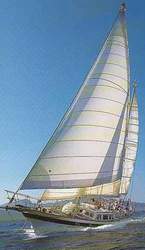|
Split
Is the economic and administrative center of Middle Dalmatia, with about 200,000 inhabitants. It is also the jumping-off point for exploration of the coast and islands of the beautiful Croatian Adriatic. The site was first settled when, at the end of the third century AD, the Roman Emperor Diocletian built his palace here. The importance of Diocletian's Palace far transcends local significance because of its level of preservation and the buildings of succeeding historical periods built within its walls, which today form the very heart of old Split. Split's growth became particularly rapid in the 7th century, when the inhabitants of the destroyed Greek and Roman metropolis Salonae (present-day Solin) took refuge within its walls. The lovely ruins of Solin outside the city can still be explored today. In the Middle Ages, Split was an autonomous commune.
Many of Split's historical and cultural buildings can be found within the walls of Diocletian's Palace. In addition, numerous museums, the National Theatre, and old churches and other archeological sites in the Split region make it an important cultural attraction.
Split is a busy port, with an international airport and regular ferry services with the nearby islands, the north and south Adriatic, Italy and Greece. The merchant and passenger ships of the Split shipyards may be encountered in almost all the seas of the world. In addition, the city has large chemical works, metallurgy plants, and workshops for the production of solar cells. The fertile fields around Split represent a good base for agriculture, while cultural monuments, superb landscapes and unparalleled seascapes make it a tourist's wonderland. Split is also a university seat and host to numerous scientific institutions.
ISLAND VIS
The beauty of limpid waters and protected submarine world rich with sunken ships and magic marine images that has been hidden for years.
Relax on secluded beaches of numerous peaceful bays, in transparent blue sea and under the hot sun of Vis. Spend your time in historic ambience of mediaeval cities of Vis and Komiža that echo the voices of a cappella singers and treat your soul with visits to Archaeological Museum and Museum of Fisheries.
Sail out with us to nameless bays, to Biševo, to the Blue Cave, the gam of the Adriatic, famous for its unique iridescent reflection of shades of blue and silver that delight the visitors
HVAR
The access to Hvar implies the point from which we have reached it. From the sea, we get the sight of a waterfront promenade strip bordered with a row of palm trees and seven centuries old walls, overtopped by the fortresses protecting Hvar, extending downwards to the town and to the Venetian loggia. Coming from the central part of the island or using the road from the ferry harbour we arrive at the magnificent Piazza, a square generally considered the most beautiful of the kind in Dalmatia, dominated by St. Stephen's Cathedral and bordered by the palaces of Groda and by the cascading stone-built houses of Burag. But, no matter from which point this town is approached, Hvar straightway presents itself as a monument. Centuries have ground its stone, epochs, above all renaissances, have shaped its appearance. Monuments within monuments, monuments on monuments. Hvar is a jewel hidden by the time.
Yet, the presentation of Hvar is not defined by itsmonuments only. It should include its harbourspreading towards the sea and the islands called Pakleni Otoci, its hotels, apartments, its unmatched climate having healing properties, its restaurants and cafes, all reflecting the glossy spirit of an exquisite resort area for almost a century and a half
Hvar displays with pride the oldest municipal theatre in Europe. Hvar has been built through time by notable domestic and foreign architects. Hvar has been celebrated in verses. Hvar has been painted by the painters. But Hvar itself is the best narrator of its own story. It is enough to come and see for oneself. That way we shall touch a piece of the legend.
Its natural landscapes are probably the most magnificent and impressive image of Hvar. The mild Mediterranean Sun shining almost three thousand hours per year, the clear night skies with stars as on one's palm, the azure sea generously revealing the treasurers of the Neptune's underwater gardens, opiate fragrances of rosemary, heather and garden-sage or the song of cicadae at noon, these are the impressions that remain longest in our experience of Hvar.
In such ambiance, as if painted after the mythic Arcadia, a group of islets off the town of Hvar - the Paklinski Otoci - make place of exceptional value for all those apt to feel and experience the primordial elements of the landscapes of Hvar. In the same way, the hidden bays of the northern and southern coast of the island (Milna, Dubovica, Pišćena, Vira, Pribinja and many more, inhabited and uninhabited) make the highlights of its genuine atmosphere and smells.
MLJET ISLAND
Mljet is one of the woodiest and greenest islands on the Adriatic. According to some, it is also one of the prettiest. In the port of Polace, there are remains of a magnificent 2nd Century fortified Roman summer residence. Due to the island's relative isolation from the mainland, most of the architecture is very similar to what it was a few hundred years ago - beautiful stone houses still dominate the island. For its exceptional natural beauties, western part of Mljet was proclaimed the National Park.
BRAC ISLAND
BRAC, the largest island of the central Dalmatian group of islands, the third largest among the Adriatic islands; area 394.57 sq km; population 13,824. It is separated from the mainland by the Brac Channel, from the island of Solta by the so-called Splitska Vrata (Split Gate) and from the island of Hvar by the Hvar Channel. The highest peak of the island, Vidova Gora (Vitus' Mount) (778 m), is also the highest peak of all Croatian islands.
|

